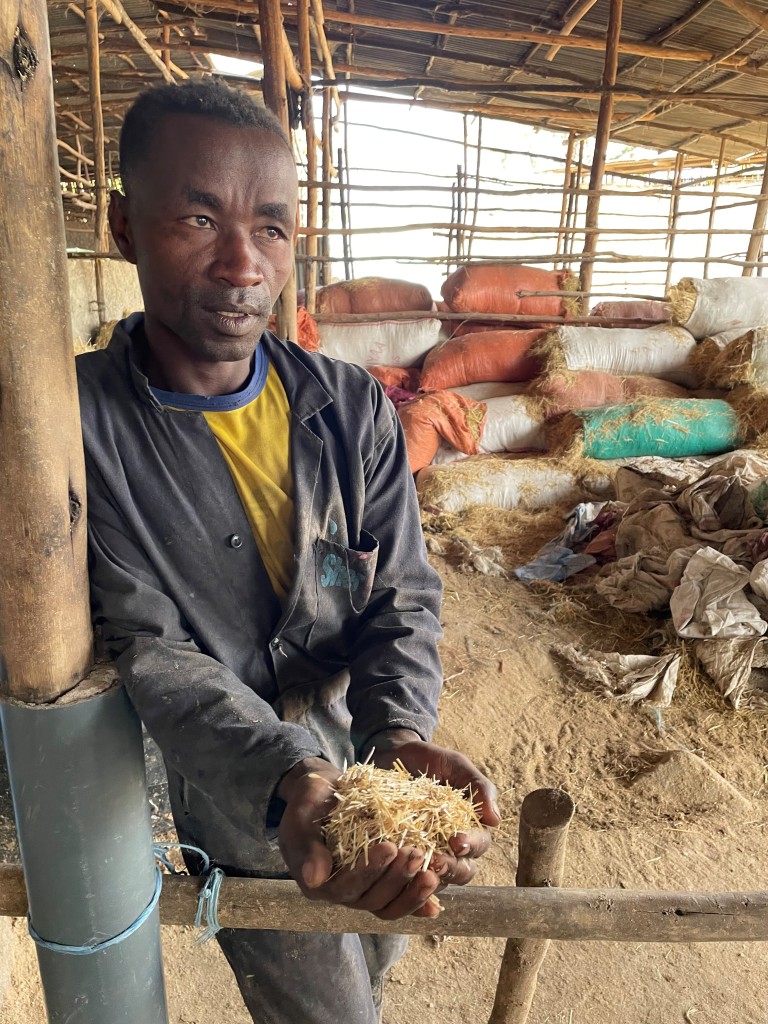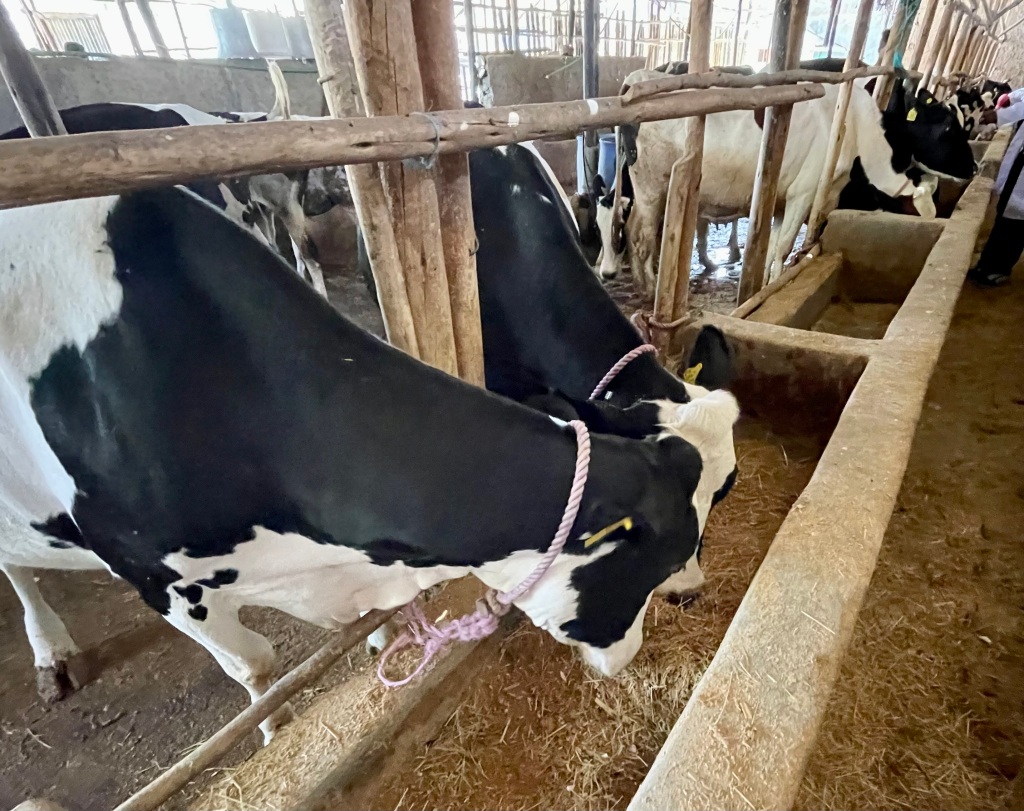
Assessing the current feeding program at Yaya dairy was the first step in determining opportunities to improve how they feed their cows. This included assessing the ingredients they feed as well as the way in which they feed them. Both are important to ensuring we are meeting the cow’s nutrient requirements to remain healthy and productive.
Forage options:
February is in the midst of the dry season in Ethiopia. They haven’t had any significant rainfall since October. While access to ground water in this area is okay, the soil is very dry and provides limited options to for pasture or fresh feed. Developing a plan for improved feed storage systems so that more forage can be harvested during the rainy season, stored and then fed during the dry season is a longer-term goal.

However, my immediate goal is to identify ways we can make small changes now that will lead to improved feed intake and subsequently increased milk production. We currently have very limited feed options. The primary forage types available right now are Wheat Straw, Barley Straw, Teff Straw, and Maize Stover.

The biggest challenge we have is to find ways to improve the palatability of these dry forages so that the cows will eat them. In other words, we have to find the best recipe we can make and the way we make it, using a set list of ingredients.
Yaya Dairy’s feed formulation consisted of Teff Straw, Brewery By-product (Brewer’s Grain), Wheat Bran and a Grain Concentrate mix that includes a blend of both protein and energy sources). They have some access Barley and Wheat straw and recently received several large totes of Maize (corn) Stover to see how well the cows eat it and perform.
Assessing the current (now old) feeding system


One way of improving palatability of these dry forages is to add moisture. Some in the past have suggested making a wet “mash” as the best option to ensure the cows eat all of the forage. That may work in some situations, but, the cows were telling me that it may not be the best option for Yaya Dairy. Observing cows taking small bites of soggy forage and seeing the more expensive grains settle to a sloppy mess on the bottom of the feed trough, I showed Yared, the dairy farmer, and Teshome, the manager what was happening. The
cows were limiting their feed intake and weren’t getting a consistent diet every day. So, I proposed we try making a TMR (Total Mixed Ration) for the cows.
Introducing a TMR to the cows at Yaya Dairy
We made the change for that afternoon’s feeding and were ready to assess how the cows respond. Since this was just a “test” and because we don’t have a TMR mixer here, we simply brought all the ingredients to the feed bunk and blended them together right there. Within moments, we saw positive indications that the cows really liked this feeding approach. We watched as the entire row of cows stood eating until it was all gone. I was excited to see this progress and thrilled to here Yared declare, “We now have a new feed system!” We have since continued to increase the TMR batch sizes because they are eating more and more every day.
While it will take a little while for the cows to respond with increased milk production, this change is expected to make a very significant impact on Yaya Dairy Farm’s ability to produce more milk and to make more milk available at an affordable price for the people in the Ziway community.






